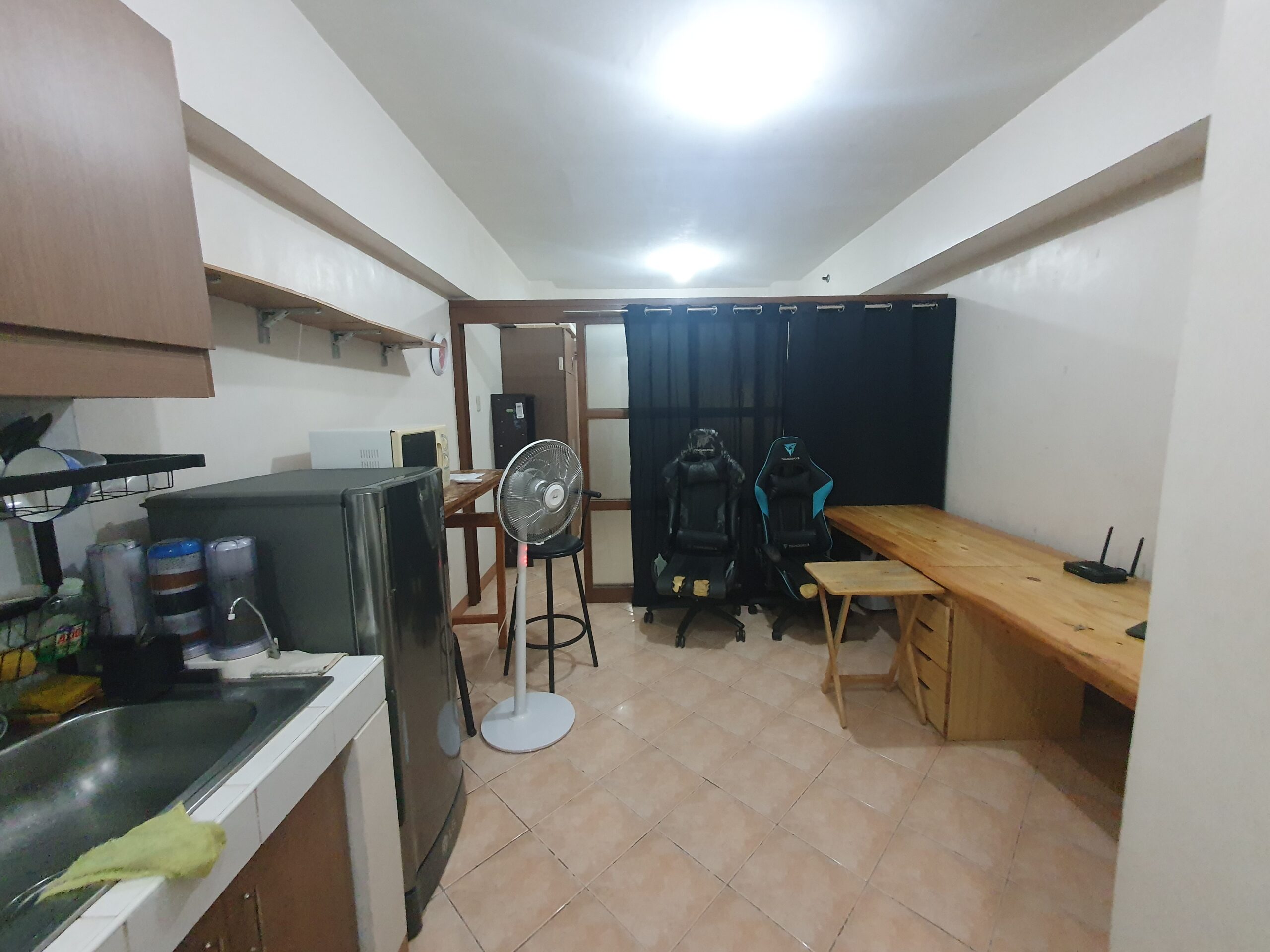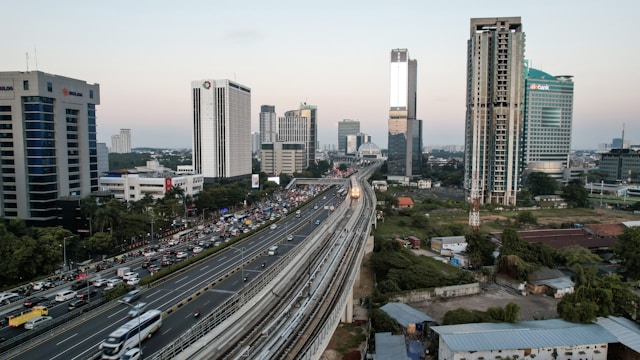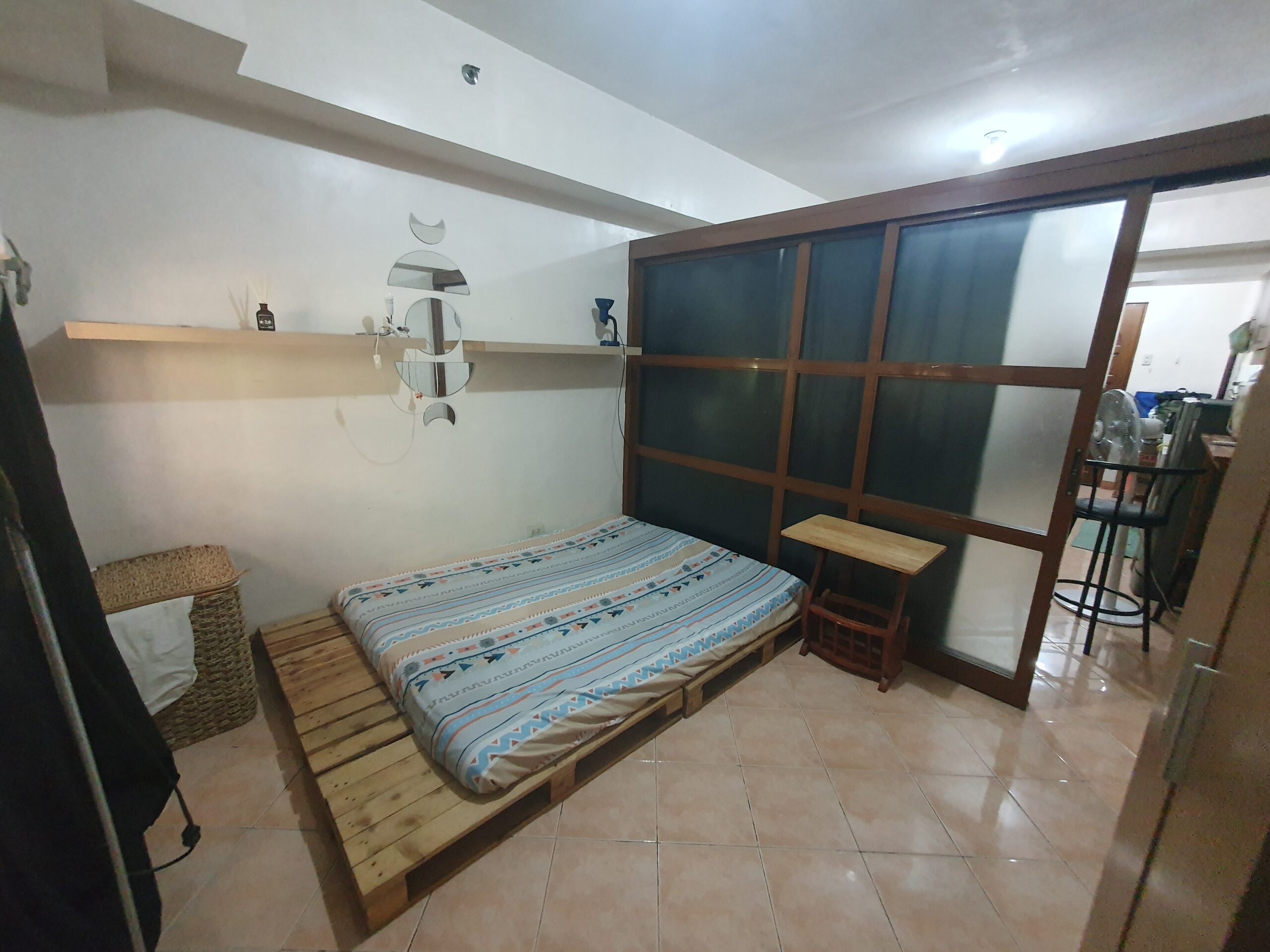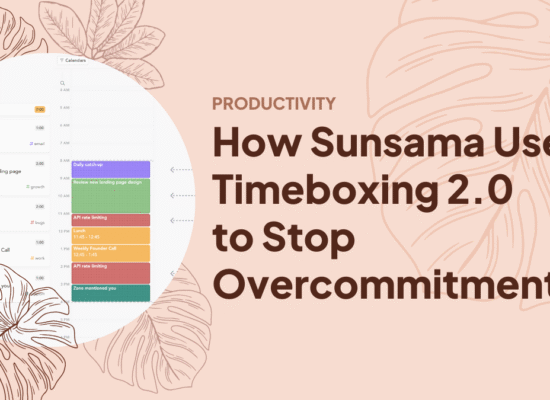Table of Contents
- Understanding the Manila Condo Market
- The Financial Benefits of Condo Renting
- Lifestyle Factors: City Life Condo Considerations
- Why Renting at The Manila Residences Tower I Makes Sense
- Why Consider Our 1-Bedroom Condo for Rent?
- Final Thoughts
- Discover Affordable Luxury Living Without Financial Commitment
Condo renting vs. buying represents one of the most significant financial decisions facing Manila residents today, as the city’s skyline continues to transform with high-rise developments dominating the urban landscape. As of 2025, Metro Manila’s real estate market presents a fascinating paradox—there’s an oversupply of condominium units, yet prices haven’t significantly decreased. This situation creates a critical decision point for many Filipinos and expatriates seeking housing solutions in the capital region.
The appeal of condominium living is undeniable. These vertical communities offer convenience, security, and amenities that traditional housing often can’t match in prime urban locations. For young professionals, starting families, and investors alike, condos represent modern city living at its most efficient.
The current market conditions have created an interesting dynamic. With approximately 37,800 unsold condo units in Metro Manila as of 2024—half priced between ₱3 million and ₱7 million—prospective residents have options but face challenging financial calculations. Monthly mortgage payments can reach up to ₱40,000, pushing many to consider alternatives outside the capital or to continue renting.
In this analysis, we’ll explore both options through the lens of actual numbers, current market data, and practical considerations to help you make an informed decision about whether to sign a lease or take the plunge into condo ownership.
Understanding the Manila Condo Market
Metro Manila’s condominium market is currently in a correction phase following several boom years and the disruption caused by the pandemic. Property experts like KMC Savills Inc. note that condo prices may need adjustment as developers attempt to monetize unsold inventory. The average price per square meter in Metro Manila stands at ₱217,000, with premium areas commanding significantly higher rates.
Interest rates have played a decisive role in market dynamics. When rates were stable at around 4%, demand remained strong. However, as rates climbed to 6.5% in late 2023 and have stayed elevated (currently at 5.75%), condo loan applications have declined by 13.2% year-over-year as of Q3 2024.
Another significant factor affecting the market has been the exodus of Philippine Offshore Gaming Operators (POGOs), which previously occupied many condominium units. Their departure has left vacancy rates above 20% in most submarkets, with Bay Area and Alabang particularly affected at rates exceeding 30%.
Popular Areas for Condominiums
The most sought-after condominium locations in Metro Manila feature varying price points and investment potential:
- Makati commands the highest prices at ₱364,000 per square meter, remaining the premier business district with established luxury developments
- Bonifacio Global City (BGC) follows closely with upscale offerings and a master-planned environment
- Ortigas Center provides a more accessible price point with strong commercial infrastructure
- Bay Area offers waterfront living but currently faces high vacancy challenges
- Quezon City provides more affordable options with improving infrastructure connections
The Manila Residences Tower I Location Advantages
The Manila Residences Tower I benefits from its strategic position in the urban core. Located with convenient access to major business districts while offering slightly more favorable pricing than prime CBD locations, it represents the value proposition many condo seekers prioritize. Proximity to essential services, transportation hubs, and lifestyle amenities enhances daily living convenience while potentially supporting long-term value appreciation as the urban core continues its redevelopment.
The True Cost of Buying a Condo

The journey to condo ownership begins with substantial initial outlays that many prospective buyers underestimate. For a typical ₱5 million condominium unit in Metro Manila:
- Down payment: Typically 20% of the purchase price, equaling ₱1 million
- Documentary Stamp Tax: 1.5% of the purchase price, adding ₱75,000
- Transfer Tax: 0.5-0.75% depending on the location, approximately ₱30,000
- Registration Fees: Roughly ₱8,000-₱10,000
- Notarial and Documentation Fees: ₱5,000-₱10,000
- Title Insurance: Optional but recommended, about ₱5,000-₱15,000
According to Lamudi data, households in NCR need to allocate approximately 24% of their monthly income just to manage the down payment, assuming they earn the regional average of ₱418k annually. This financial commitment represents a significant barrier to entry for many would-be owners.
Beyond the visible expenses, several hidden costs can surprise new condo owners:
- Parking space: Often sold separately at ₱1-2 million per slot
- Fit-out and renovation costs: Basic units may require ₱300,000-₱500,000 to finish to your standards
- Moving expenses: Transportation and logistics can cost ₱10,000-₱30,000
- Utility deposits and connections: Approximately ₱15,000-₱25,000
- Property insurance: Annual premiums of ₱5,000-₱10,000
- Special assessments: Occasional fees for major building repairs or improvements
These “invisible” expenses can add 5-10% to your overall investment, stretching budgets beyond comfort zones for many buyers.
Monthly Expenses Beyond Mortgage (Association Dues, Property Tax)
The mortgage payment is just the beginning of ongoing costs:
- Association dues: ₱50-₱100 per square meter monthly (₱2,500-₱5,000 for a 50sqm unit)
- Real Property Tax: Approximately 1% of assessed value annually, often ₱5,000-₱10,000
- Utilities: Higher in full-service buildings with centralized systems
- Parking fees: If not purchased, monthly rental of ₱2,000-₱5,000 depending on location
- Building staff tips/gratuities: An often overlooked expense of ₱500-₱1,000 monthly
These regular expenditures can add ₱8,000-₱15,000 monthly beyond your mortgage payment, significantly impacting affordability calculations.
Maintenance Responsibilities and Expenses
While association dues cover common areas, individual unit maintenance falls to owners:
- Air conditioning service: ₱1,500-₱3,000 quarterly
- Plumbing and electrical repairs: ₱5,000-₱15,000 annually on average
- Appliance maintenance and replacement: Depreciation costs of ₱10,000-₱20,000 annually
- Interior painting and refurbishment: ₱30,000-₱50,000 every 3-5 years
- Pest control: ₱1,000-₱2,000 quarterly
Even with careful use, condo units require 1-2% of their purchase value in annual maintenance to maintain their condition and value.
Calculation Example: Total 5-Year Cost of Owning a Typical 1-Bedroom Condo
For a ₱5 million, 50sqm one-bedroom unit with 80% financing at 6.5% interest over 20 years:
- Initial costs: ₱1.2 million (down payment plus closing costs)
- Monthly mortgage: Approximately ₱30,000 (₱1.8 million over 5 years)
- Association dues and taxes: ₱5,000 monthly (₱300,000 over 5 years)
- Maintenance expenses: ₱50,000 annually (₱250,000 over 5 years)
- Insurance and other expenses: ₱20,000 annually (₱100,000 over 5 years)
Total 5-year ownership cost: approximately ₱3.65 million, not including the principal portion of mortgage payments (which builds equity), or any property appreciation. This substantial investment must be weighed against rental options and opportunity costs when determining whether condo renting vs. buying makes more financial sense for your specific situation.
The Financial Benefits of Condo Renting


1. Lower Initial Investment Required
Condo renting vs. buying presents a stark contrast in terms of initial capital outlay. While purchasing a condominium unit in Metro Manila requires substantial upfront funds—typically 20% down payment plus closing costs—renting demands significantly less initial investment:
- Security deposit: Usually equivalent to 2 months’ rent (₱30,000-₱60,000 for a mid-range unit)
- Advance rent: Typically 1 month (₱15,000-₱30,000)
- Utility deposits: Approximately ₱5,000-₱10,000
- Minor move-in costs: ₱10,000-₱20,000
For a standard one-bedroom condo for rent in a decent Metro Manila location, the initial outlay might total ₱60,000-₱120,000—a fraction of the ₱1 million+ down payment required for purchasing a similar unit. This lower barrier to entry preserves your liquidity, keeping substantial funds available for other investments or emergency needs.
2. No Property Tax Burden
Property ownership in the Philippines comes with recurring tax obligations that renters avoid entirely:
- Real Property Tax (RPT): Typically 1-2% of the assessed value annually
- Special Education Fund Tax: Additional 1% of the assessed value
- Documentary stamps and registration fees for any property-related transactions
For a ₱5 million condominium unit, these taxes can amount to ₱10,000-₱20,000 annually—costs that renters never encounter. The landlord absorbs these expenses, typically factoring them into the rental price but spreading the burden across the lease term.
3. Maintenance Handled by the Owner
One of the most financially significant advantages of condo renting involves maintenance responsibilities. When you lease a condo unit:
- Major repairs: Building systems, structural issues, appliance replacements—all handled by the owner
- Unit renovations: Updating outdated features generally falls to the landlord
- Emergency fixes: Plumbing problems, electrical issues, or water damage typically remain the owner’s responsibility
According to property managers in Manila, homeowners should budget approximately 1-2% of their property’s value annually for maintenance (₱50,000-₱100,000 for a ₱5 million unit). Renters avoid these unpredictable expenses entirely, creating more predictable monthly budgeting.
4. Flexibility to Relocate as Needed
The ability to relocate without financial penalty represents a significant economic advantage for renters, particularly in Manila’s evolving urban landscape:
- Career opportunities: Accept job offers in different districts without selling property
- Neighborhood changes: Easily move if an area becomes less desirable or experiences sensory overload from development
- Changing space needs: Upsize or downsize as family situations evolve
- Infrastructure developments: Relocate to leverage new transportation options
With standard leases running 12 months, renters maintain the flexibility to make lifestyle changes that property owners can only achieve through costly selling and repurchasing processes, which include agent commissions (3-5%) and transfer taxes.
5. No Exposure to Market Downturns
Recent data from property experts indicates that Metro Manila is experiencing an oversupply of condominium units, particularly with vacancies exceeding 30% in areas like Bay Area and Alabang following the POGO exodus. As a renter, you remain insulated from:
- Capital depreciation: No risk of negative equity if market values decline
- Falling rental yields: Declining income potential affects owners, not renters
- Extended selling periods: No worry about illiquid assets during market corrections
- Pressure to sell at a loss: Avoid forced timing decisions during personal financial challenges
While property has historically appreciated in Manila over long periods, short and medium-term fluctuations pose real risks to owners that renters simply don’t face.
Calculation Example: Total 5-Year Cost of Renting a Similar Unit
For comparative analysis with ownership costs, let’s examine the 5-year expenses for renting a typical 50sqm one-bedroom city life condo in a middle-tier Metro Manila location:
- Initial costs: ₱90,000 (deposits and move-in expenses, most recoverable)
- Monthly rent: ₱25,000 with 3% annual increases (₱1,545,000 over 5 years)
- Renter’s insurance: ₱5,000 annually (₱25,000 over 5 years)
- Minor maintenance: ₱5,000 annually for small tenant responsibilities (₱25,000 over 5 years)
Total 5-year rental cost: approximately ₱1,685,000 (with security deposit returned: ₱1,635,000)
Compared to the ₱3.65 million five-year ownership cost for a similar unit, renting presents nearly ₱2 million in potential savings—funds that could be invested elsewhere or used to enhance quality of life.
Lifestyle Factors: City Life Condo Considerations

How Your Lifestyle Affects the Rent vs. Buy Decision
The condo renting vs. buying equation cannot be solved through financial calculations alone—lifestyle preferences and priorities play an equally important role:
- Urban involvement: If you thrive on constant city engagement, the flexibility of renting allows you to change neighborhoods to experience different facets of Manila’s evolving urban scene
- Work-life integration: Those who prioritize minimal commutes might prefer ownership in a strategically located building near their workplace
- Social connections: Renters can more easily choose buildings with demographic profiles matching their social preferences
- Privacy preferences: Owners have greater control over unit modifications to enhance soundproofing and reduce sensory overload common in high-density living
Research indicates that middle-income families in areas like CALABARZON and Central Luzon often prioritize stability and community embedding, making ownership more attractive despite higher costs. Conversely, young professionals in NCR frequently prioritize experience variety and career mobility, aligning better with rental arrangements.
Career Flexibility and Mobility Needs
Your professional trajectory significantly impacts the wisdom of your housing decision:
- Career stage: Early-career professionals experiencing rapid advancement benefit from the mobility renting provides
- Industry stability: Those in stable, location-fixed industries may find ownership more compatible with career patterns
- Remote work considerations: With increasing work-from-home options, some professionals are choosing to rent smaller units in the city while investing in provincial properties
- International potential: Careers with possible overseas assignments favor rental arrangements
The emerging pattern shows that Manila professionals with high career mobility potential are increasingly choosing condo for rent options in multiple locations rather than committing to a single ownership position, creating a portfolio of living experiences aligned with career development.

Time Commitment Differences Between Owning and Renting
Beyond financial considerations, the time investment differential between ownership and renting proves substantial:
- Property management: Owners spend an average of 5-10 hours monthly handling association matters, maintenance coordination, and improvement planning
- Decision-making burden: Homeowners association meetings, building policy votes, and community decisions require time investment renters avoid
- Maintenance coordination: Scheduling and overseeing repairs demands significant owner attention
- Financial administration: Property tax filings, insurance reviews, and mortgage management create ongoing time commitments
For busy professionals already experiencing sensory overload from demanding careers, the simplicity of rental arrangements—where a single monthly payment covers most obligations—often provides valuable time savings that translate to quality of life improvements.
Building Amenities Access (Whether You Rent or Buy)
A common misconception suggests owners receive preferential amenity access in condominium buildings. In reality:
- Equal access rights: Building amenities are equally available to all residents, regardless of tenure status
- Fee structures: Both owners and renters contribute to amenity maintenance—owners through association dues, renters through incorporated rental costs
- Reservation systems: Facilities like function rooms, swimming pools, and gym time slots follow the same booking procedures for all residents
- Special events: Community activities are typically open to the entire building population
The amenity-rich city life condo experience remains virtually identical whether you’re paying a mortgage or rent. Both ownership and rental arrangements provide the same lifestyle benefits of concierge services, security features, and recreational facilities that make condominium living attractive in Metro Manila’s urban environment.
This equality of experience means that your housing decision can focus more on financial considerations and future flexibility rather than concerns about differential treatment or access limitations based on ownership status.
Why Renting at The Manila Residences Tower I Makes Sense
When evaluating condo renting vs. buying options in Manila, location often emerges as the decisive factor, and The Manila Residences Tower I delivers exceptional positional value. Strategically situated in the heart of Manila’s dynamic urban corridor, this property offers:
- Business district proximity: Just 15 minutes from Makati CBD and 20 minutes from BGC, reducing commute times and transportation expenses
- Transportation connectivity: Multiple access points to MRT/LRT lines and major thoroughfares, with the upcoming Metro Manila Subway station within walking distance
- Essential amenities accessibility: Less than 500 meters to major shopping centers, hospitals, and educational institutions
- Cultural engagement: Easy access to museums, performance venues, and historical sites that enhance city life condo experiences
This prime location translates to significant time and financial savings, particularly for professionals who value reduced commuting costs and students attending nearby universities. Location-related expenses often get overlooked in the condo renting vs. buying equation, but can amount to ₱5,000-₱8,000 monthly in transportation savings alone.
Amenities Included in the Rental Price
The Manila Residences Tower I distinguishes itself by offering comprehensive amenities that enhance daily living without additional costs beyond the standard rental fee:
- Fitness facilities: Fully-equipped gym with cardio and strength training equipment
- Leisure spaces: Swimming pool, gardens, and lounge areas ideal for relaxation or social gatherings
- Security systems: 24/7 security personnel, CCTV monitoring, and access control
- Utility infrastructure: Backup power systems and water reserves ensuring uninterrupted service
These amenities, which would require substantial association dues for owners (approximately ₱4,000-₱6,000 monthly), are seamlessly incorporated into the rental package. This integration offers tremendous value for renters seeking comprehensive city living without the financial burden of amenity maintenance.
Quality Living Without the Long-Term Commitment
The Manila Residences Tower I exemplifies how condo renting can provide premium living experiences without mortgage-length commitments:
- Building maintenance: Impeccably maintained common areas and structural systems
- Professional management: Responsive property management addressing resident concerns promptly
- Community atmosphere: Diverse resident profile creating a vibrant social environment
These quality features would typically require substantial investment for buyers, but renters access them through affordable monthly payments while maintaining the flexibility to explore other opportunities as personal or professional circumstances evolve.
Why Consider Our 1-Bedroom Condo for Rent?
Our featured 1-bedroom condo for rent at The Manila Residences Tower I presents an exceptional value proposition starting at ₱25,000 monthly:
- Thoughtful layout: 32 square meters optimized for functionality and comfort
- Full furnishings: Complete furniture package including queen-sized bed and storage solutions
- Modern technology: High-speed internet ready, inverter air conditioning, and smart home capabilities
This particular unit, situated on the 23rd floor facing the other tower avoids the heat. The layout maximizes space efficiency without creating sensory overload, offering distinct living zones within an open-concept design. This 1-bedroom condo for students or young professionals provides an ideal balance of privacy and social space.





What Makes This Particular Unit a Smart Financial Choice?
Beyond the general advantages of condo renting vs. buying, this specific unit offers unique financial benefits:
- Inclusive utilities package: Association dues included in the rental price, saving approximately ₱2,600 monthly
- Energy efficiency: Strategically positioned windows and energy-efficient appliances reducing electricity consumption by up to 20% compared to typical units
- Maintenance savings: Regularly monitored and maintained hence, minimizing potential repair expenses
- Flexible terms: One-month minimum lease with renewal options allowing financial planning flexibility
- No hidden costs: Transparent fee structure with no escalating charges or surprise assessments
Compared to similar units in the area, this rental offers 15-20% better value when accounting for included utilities, furnishings, and location advantages. For those weighing condo renting vs. buying options, this particular unit demonstrates how thoughtful renting can provide premium living experiences at a fraction of ownership costs.
Final Thoughts
The condo renting vs. buying decision in Manila demands careful financial and lifestyle analysis. Our comprehensive examination reveals that while ownership offers potential equity building, renting provides significant advantages including lower upfront costs, flexibility, and freedom from market fluctuations—particularly valuable in Metro Manila’s current oversupplied condo market. For young professionals, students, and those with evolving career trajectories, strategic renting at locations like The Manila Residences Tower I can deliver premium city living experiences with superior financial efficiency compared to purchasing similar accommodations.
Key Takeaways:
- Renting requires approximately ₱100,000 initial investment versus ₱1 million+ for buying, preserving your capital for other investments
- Monthly rental payments provide predictable expenses without surprise maintenance costs, property taxes, or special assessments
- Choosing a strategically located rental like our featured 1-bedroom unit provides premium amenities and prime positioning without long-term financial commitment
Frequently Asked Questions
Is renting truly more economical than buying in Manila?
For periods under 7-10 years and considering current market conditions, renting often proves more economical when factoring all ownership costs and opportunity costs of invested capital.
What should I look for in a rental condo to maximize value?
Focus on location relative to your daily activities, included amenities, unit condition, and transparent fee structures without hidden costs.
Can I personalize a rental unit at The Manila Residences Tower I?
Yes, our unit allows reasonable customization with management approval, including wall decorations, furniture arrangements, and minor fixture upgrades.
Discover Affordable Luxury Living Without Financial Commitment
Maria is an accomplished digital marketing professional, specializing in content marketing and SEO. She's a neurodivergent who strives to raise awareness, and overcome the stigma that envelopes around mental health.






